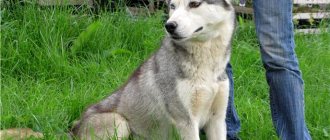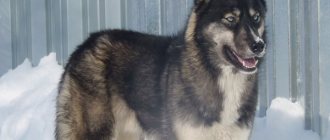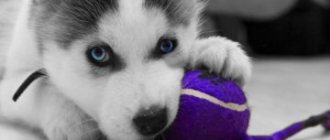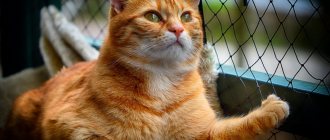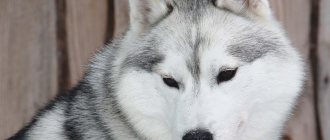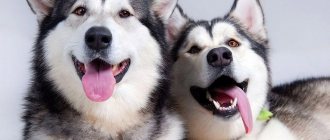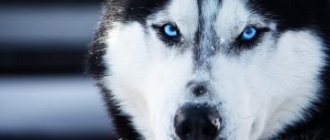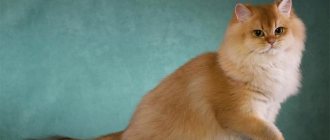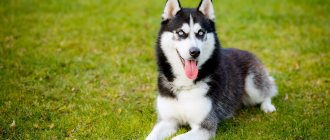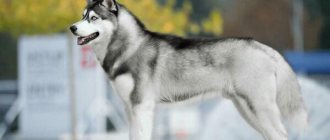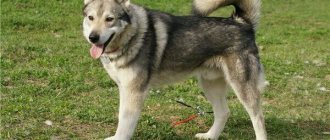Siberian Huskies have long ceased to be just sled dogs. They are distinguished by their calm and calm character, endurance, and kind attitude towards others, which is why dog breeders all over the world adopt charming puppies with blue eyes. Few people know which husky colors correspond to the standard, and which color is classified as a breed defect. Before you buy a cute little cat, it’s worth getting to know the most common color options for its coat.
What is the reason for the variety of colors?
Husky was bred by the peoples of the Far North based on local dogs and wolves. Selection for many centuries was carried out on the principle of selecting the most hardy and efficient individuals that can easily withstand harsh climatic conditions. They not only have to run in a harness, but also sleep in the snow. That is why minimal attention was paid to appearance, and the closest attention was paid to working qualities and health. This is how huskies of different colors appeared.
According to the standard approved by the IFF, the color can be anything from white to black. Different colors in all possible combinations, marks on the body or their complete absence are acceptable.
In the Russian Federation, the approach to this issue is more conservative - white color or its combination with black, gray or brown is considered the standard. But the rest of the colors are not considered a marriage, especially since Khasenys have such individual colors that it is extremely difficult to find two absolutely identical puppies.
Photo and video review
The main characteristics of the Husky breed allow us to call dogs unique creatures. This can be seen in life, in photos, videos. Dogs in any of their manifestations attract attention.
People can rely on a pet when left alone with the harsh nature. Dogs will never abandon a person; they will warm him with their bodies.
Common Siberian Husky Colors
There is no clear classification of husky colors. Dogs differ in the location of spots, markings, facial mask, eye and nose color.
World dog experts distinguish not four (as in the Russian Federation) color variations, but about twenty. The most common among them:
- brown;
- gray;
- chocolate;
- fawn;
- silver
Brown
Another name for brown color according to the standard is red. Hasyats are often born with red tops and white bottoms. In summer, under the bright sun, the coat fades a little, turns pale and the tone becomes less saturated. During this period, huskies are more beige than brown, and they are called yellow, which is a mistake. The eyes, which have several color variations, give the animals a special charm and uniqueness. Brown dogs with blue eyes and dark “glasses” around them look especially impressive. Over time, they can disappear, turning into a slightly noticeable outline.
Very often, newly born Khasenys have a rich fiery color. After the first molt, the puppies change color and turn into a white dog with light brown spots.
Gray (wolf)
The gray color is called wolf because of its similarity to the color of predators. In addition to the main color, it contains small inclusions of red and fawn. The spots are most noticeable behind the ears, on the neck, thighs, legs and hocks. The undercoat of gray hasenies is beige, the rims of the eyes, lips and nose are black.
Very often, gray-white cats with blue eyes are born. The shade of the coat can be either light or dark, the undercoat can be gray, cream or beige. If the coat is silver, the undercoat is white, as is the belly and paws. The mask on the face and the upper back are gray. Hasyats with wolf coloring have brown, multi-colored or blue eyes.
Chocolate
The richness of the chocolate color of the coat varies - from light cream to dark brown. Copper-colored dogs, which are lighter and brighter than chocolate, look most impressive. In combination with blue eyes, the suit looks amazing. Eye rims, nose, lips should be brown. More often, white-chocolate hasyats are born - with a light bottom, a darker back, brown, blue or different eyes.
Pale yellow
The fawn color is close in tone to red, but not as rich, more subdued. A noble pastel shade reminiscent of cream or beige. The pigmentation of the rims of the eyes, lips and nose is brown.
If the chicks are born fawn-white, the top of the body is initially brighter. Over time, the shade fades and differs very little from the main color.
Silver
The most striking of the light husky colors is silver. In the sun, the coat shimmers due to the combination of the white background of the undercoat and the shiny gray guard.
In silver-white huskies, the mask is clearly expressed, as is the “arrow” on the forehead. Such Khasenys are characterized by dark eye rims and a bright blue iris. Another name for the silver color is “silver”.
Breed standards
Huskies are similar in genotype to wolves.
The dogs are very muscular, with a developed skeleton, large, especially males. At the withers, height reaches 60 cm, weight - from 16 to 27 kg. Standard breed description:
- Head. From the back of the head to the eyes, the skull narrows, the size is medium, the shape is proportional to the body. The muzzle is the same length as the skull and ends with a nose, the color of which depends on the color of the coat. According to the standard, the lobe may have pink veins. In this case, the nose is called snowy.
- Eyes. Almond-shaped, brown or blue.
- Ears. Small, triangular, close-set.
- Rib cage. Not very wide, but strong.
- Tail. In a calm state, the tail hangs down, and in an excited state it is sickle-shaped. It should not fall to the side or lie against your back.
- Wool. The hair is soft, there is a dense, fluffy undercoat, which falls out during shedding.
These are standard criteria for selecting a quality dog. Most of the characteristics are noticeable from puppyhood, so choosing a purebred will not be difficult.
Most characteristics are noticeable already in puppyhood
Rare husky colors
The most common color is gray. A white dog with blue eyes is not common, as are the rare husky colors presented in the table:
| Color | Description |
| White | Another name is snowy. Dogs have white not only guard hair, but also undercoat. Eyes are light brown, blue or different. |
| Soboliny (sable) | Sable Khasenysh with a bright copper undercoat. The spine is gradient - the color at the base is beige, and at the end it is dark gray, black-brown. The lips and eye rims are black. The nose may be brown. |
| Piebald | Piebald or spotted coloring involves a white background, occupying at least 70% of the husky's coat, and colored markings. They are of different shapes (round, asymmetrical) and colors (from red to black). Another name for the piebald color is pibold. |
| Black | There are no completely black huskies. Lighter markings are required on the legs, tail, and chest. If the pure charcoal color is at least 75%, the dog is classified as black or called an Afro Husky. |
| Black and white | In black and white, the percentage of the two colors is approximately the same. Dark back, main part of tail, outer side of ears. White muzzle with a mark on the forehead and paws. |
| Splash coat | Splash Coat Husky and Peebold are often confused. This is no coincidence. Both are black and white, with blue eyes, only the number and shape of the markings are different. Their arrangement in splash coats is often called “coat and cap”. The main difference is that there is more white than black and there is a light ring on the neck. |
| Tricolor | The background is black, and the muzzle, paws and chest are snow-white. A distinctive feature of the tricolor is the red markings near the eyes, on the body and limbs. The husky's undercoat can be yellow, peach or orange. |
| Marble | Rare huskies with a black muzzle, back, tail and hips, a random arrangement of spots on a light background. Markings of gray color of varying intensity. Eye rims, nose and lips are black. |
| Isabella | The dog has white fur with a fawn-colored awn. Eyes, nose, mucous membranes are brown. |
| Agouti | A rare color in which the hairs come in three shades at once - white, black and red. In combination with blue eyes, the husky looks menacing and unusual. |
| Cheprachny | A special feature of the saddle coat color is a dark saddle-shaped spot on the back. The mark, located on a snow-white background, can be of all types of colors - red, chocolate, gray and others. |
Bottom line
A wide range of colors and patterns are very popular in the Siberian Husky, so there are no true rare colors or patterns. The rare color of the Siberian Husky is most likely white, while the most unusual pattern seems to be piebald.
We hope you enjoyed reading our brief overview of the wide range of colors available in the Siberian Husky. Many of them are quite distracting. If we've taught you anything new and increased your love for these fascinating animals, please share this complete review of Husky colors on social media.
Husky color features
The individuality of each Khasenysh is determined by the special expression of the muzzle, depending on the shade of the iris, nose and lips. What makes a dog unique is the shape and color of the mask on its face. Some puppies immediately look menacing, while others are cute and good-natured even as adults.
Nose
The shade of the nose depends on the color of the dog:
- Black - for pure black, gray, silver and brown.
- Brown – in chocolate, piebald and isabella.
- Pink or flesh-colored - white ones have it.
- Snowy - dark with brown spots, found in variegated colors.
If the nose is partially depigmented, it is considered a fault.
Eyes
The eyes of Siberian sled dogs are very expressive due to the bright colors of the iris, which can be:
- Blue - the shade remains unchanged throughout life.
- Brown is so rich that it is often mistaken for black.
- Amber is a light shade of brown, found in red, snow and chocolate specimens.
- Heterochromia – different eyes (blue combined with amber or brown).
- Interspersed with brown spots on the blue iris.
- Split – the iris is divided into two halves of different colors.
Black and tan huskies with blue eyes, white and brown and many others look very impressive. The more unusual the eye color, the higher the price of a puppy.
"Mask"
For hasyats of any color, a characteristic feature is the presence of a “mask” on the face. It has clear boundaries, light or dark, and forms patterns of different shapes and types:
- shamrock;
- wolf;
- with a stripe on the bridge of the nose;
- heart;
- glasses;
- open;
- with eyebrows.
Basic rules of care
Brown huskies need to be brushed twice a week, but when the dog is shedding and it is necessary to remove as much loose undercoat as possible, this will have to be done at least once a day.
It is not often necessary to bathe a pet of this breed: it is enough to wash it with a special shampoo 2-3 times a year, but it is better to do without bathing at all if this is not necessary.
The eyes and ears of a brown husky also need to be cleaned only if they are dirty, but they should be examined every day in order to notice the first signs of possible inflammation or other disease in time.
The teeth of these dogs, as a rule, do not need additional cleaning: it is enough to feed the pet fairly solid food and give it cartilage or special treats from time to time to help remove plaque.
CAREFULLY! Husky claws are trimmed if they grow so long that their tips bend inward.
In this case, it is recommended to use a nail clipper, and if the owner doubts that he can shorten the dog’s claws without injuring him, then he should contact a veterinary clinic.
Ginger
The most striking example of the color of this breed.
Photo of a red Siberian Husky puppy
The fiery fur shimmering in the sun makes its owner look like a fox .
Photo of a red husky
There is no need to confuse red fur with chocolate - these are two different colors .
Do Huskies love children?
Agouti
The color is rare.
It differs from others by mixing three shades of fur - black, red and white.
Agouti color husky
The base of the hairs of this coat color is light, then there is an alternation of black, red and black again.
Agouti color husky
The pigmentation of the muzzle looks like a mask of mixed multi-colored hairs, the tip of the tail is black.
Isabella
Another unusual husky color is closer to the classic white color.
Isabella Husky puppy
Husky color isabella white
The peculiarity of the fur is the awn of fawn or reddish shades.
Sable
The coat color is unusually beautiful and is rare.
The main shade is brown, red, copper-chocolate.
Sable Husky
The undercoat is usually light brown in color, the upper edge of the hairs is gray or black.
Husky dog sable color
The fur on the face may look like a black “mask”.
Splash coat
Often the splash coat color is confused with the classic pebold color or they are considered to be one and the same.
Husky in a “coat” and “hat” - splash coat color
The opinion is erroneous, since the main difference in the shade of splash wool is the presence of a unique light ring located around the animal’s neck, like a collar.
Red Husky Splash Coat
The main color is white, the “coat” is dark or bright.
Cane Corso puppies
All Cane Corso puppies are very similar to each other, and choosing a model pet is not easy.
When choosing a puppy, you need to pay attention to:
- the conditions in which dogs live;
- availability of documents for puppies;
- absence of dysplasia;
- presence of pedigree;
- the appearance of the puppy;
- breeder behavior.
Puppies are divided into show, breed and pet - these are classes that reflect the future of the dog.
The show class will shine at exhibitions, the breed will be future producers, the pet will be pets. The price will naturally vary. A Cane Corso puppy is not cheap, you will have to pay from 250 to 1500 dollars for it.
We must understand that the pet class is not a marriage; If you do not plan to breed a Cane Corso and participate in exhibitions with him, but are simply looking for a friend, this will be a faithful companion.
Currently, there are many nurseries where Cane Corso is bred, since the demand for puppies of this breed is constantly growing
When choosing a baby, it is very important to observe how he behaves - he should be brave, energetic and friendly. You also need to see how the baby eats - a healthy puppy eats with appetite. It is important to match your temperament to that of your puppy; calm people leading a measured lifestyle are unlikely to be suitable for a daredevil puppy
The puppy must have a birth certificate and a veterinary passport with all vaccinations and helminth prevention
It is important to match your temperament to that of your puppy; calm people leading a measured lifestyle are unlikely to be suitable for a daredevil puppy. The puppy must have a birth certificate and a veterinary passport with all vaccinations and helminth prevention. The puppy must have a birth certificate and a veterinary passport with all vaccinations and helminth prevention
The puppy must have a birth certificate and a veterinary passport with all vaccinations and helminth prevention.
Such a document is issued 45 days after the birth of the baby. There should be a mark on the dog’s belly, it coincides with what is in the metric.
The owner must take into account that expenses do not end after purchasing a puppy.
The cost of the dog is just the beginning. The puppy will need the services of a qualified veterinarian, will need to pay for participation in exhibitions, and pay for membership in the club.
The Cane Corso is a large dog, therefore, feeding the pet will also require expenses.
Caring for puppies is not difficult. If the dog is healthy, its fur has no odor. Shedding occurs twice a year, and since the dog's coat is short, it does not require any special care. It is enough to clean it twice a week with a special brush.
If after a walk your Cane Corso puppy resembles a pig, you need to bathe him in warm water without shampoo. If the dog is very dirty, you can bathe it with shampoo.
There are dry shampoos that simply wet the dog and then wipe it dry.
Calluses and bald patches often form on Cane Corso elbows. To prevent their appearance, these places should be lubricated with ointments against subcutaneous parasites.
As for the ears, once a week you need to remove accumulated dirt behind them. If the ears smell unpleasant and the dog shakes its head, consult a doctor.
No special care is required for the eyes; you should only contact a doctor if the dog squints, blinks frequently, or constantly rubs its eyes.
If the nails grow back too quickly, the dog will feel pain and the puppy's limbs may not form properly. As a rule, the claws are worn down while running or walking, but sometimes there is a need to correct the claws with special nippers.
A puppy's baby teeth begin to change to permanent ones at 3 months. At this time, the owner should introduce foods containing calcium into the dog’s diet.
To make teeth change faster, you can give your puppy a tendon bone, a carrot, or an edible toy.
To form the correct bite during the period of changing teeth, you need to play tug with the puppy, and be sure to carefully examine the teeth.
If the baby tooth has not yet fallen out, but a permanent tooth is already visible in its place, a veterinarian consultation is necessary.
Character traits
Red huskies are distinguished by their lively, but at the same time, friendly and calm disposition. They are smart, quick-witted, and with the right approach to training, they remember new commands well.
These dogs are good with children and willingly play with them, however, you should not trust a child with raising and training a husky, as representatives of this breed tend to be stubborn and can even become disobedient.
Red huskies are able to adapt to different living conditions and are suitable for both outdoor and indoor living.
NOTE!
These dogs are not naturally vicious towards strangers, which is why they are not suitable for the role of guards for a house or apartment.
Huskies also make bad hunters: they have a hunting instinct, which is why these dogs can catch small animals, for example, rodents or poorly flying birds, but they will not give the prey to the owner, but will try to eat it before he has time to stop them .
Marble
This color is characterized by uneven coloring of the coat and mixing of light and dark areas.
Marbled husky puppy
The base color is usually white, with randomly colored dark gray, light gray or black on the face, back, hips, and tail. Black eye rim.
Marble HuskyPinto Husky
This animal's fur looks very fancy and immediately attracts the eye .
Piebald (peebold, pinto)
The main difference between dogs with this color is pronounced spotting.
Photo of Peebold Husky
The fur itself is white , with rounded multi-colored spots scattered throughout it.
Husky pinto puppy
The nose, lips and fur around the eyes are brown, if the spots are closer to red , or black.
Black and white
A very impressive combination of coat and undercoat colors.
Blue-eyed husky puppy
The distribution of shades on the body is approximately the same .
Photo courtesy: Irina Maksimova (Sergeeva) is a professional breeder with RKF registration “From the Snow Legion”.
From the top from the head to the tail there is a solid black color, from the bottom from the muzzle to the paws it is white.
Hygiene
From an early age, you need to teach your chocolate pet hygiene. The process of molting an animal brings enough trouble to the owners. In an adult dog this happens 2 times a year. If the husky is kept in warm conditions, then shedding may not be as noticeable. From childhood, a puppy should be taught to be brushed at least 2 times a week. When his age is more than six months, you can comb him once a week.
It is very important to keep your dog's coat neat and make sure that tangles do not form. If you suddenly find a tangled piece of fur, remove it with scissors
Caring for a puppy consists of the following procedures.
- Bathing. Husky is a breed that loves cleanliness. The dog's fur does not transmit any aroma, so taking a bath with detergent is carried out no more than once a year.
- Cleaning ears and eyes. Use a cotton swab to clean problem areas 1-2 times every 2 weeks. It must be disinfected before use.
- Teeth cleaning. Check your dog periodically for plaque. When you discover this problem, take your dog to the veterinarian to have the tartar removed.
- Trimming nails. Trim nails with special animal clippers. This is done in the winter season.
